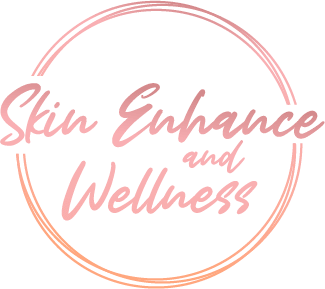Hyperpigmentation is a common concern I see in my clinic in Billericay, Essex. The uneven pigmentation can make your skin appear dull and unhealthy. On the contrary, a uniform complexion or skin tone signals youth and health. As a result, many people aim to reduce hyperpigmentation but often seek help late. I treat many patients with skin of colour with this concern. Regards of the skin type, the common goal is healthier-looking skin.
What is hyperpigmentation?
Hyperpigmentation is the visible sign of overproduction of melanin. Our skin produces melanin, the natural sunscreen, on exposure to harmful UV rays. Our skin attempts to protect us by overproducing melanin.
The three main issues are melasma, post-acne marks, and sunspots.
- Melasma has distinct features. It appears as grey or brown patches on the forehead, cheekbones, and upper lip. Hormones and UV exposure are some of the factors influencing melasma. As a result, they can worsen or improve depending on the triggers.
- Post-inflammatory marks are tell-tale signs of old acne or skin picking. They appear as red or brown marks. Although they can fade over time, treatment can accelerate progress.
- Sunspots are flat round marks found on the areas of the body exposed to the sun. They are larger than freckles and often appear later in life. These permanent dark spots are also called liver spots or solar lentigines.
Read on to discover the 3 easy steps to tackling hyperpigmentation with skincare.
Steps to tackling hyperpigmentation
Protect
You can protect your skin with two essential ingredients in your skincare routine. Firstly, daily broad-spectrum sunscreen with an SPF of at least 30. UVA rays can penetrate deep into the dermis layer and worsen hyperpigmentation. Therefore, your sunscreen must be broad-spectrum to protect against UVA rays. Remember to apply the right amount and reapply regularly to get the level of protection needed to protect your skin.
Secondly, an antioxidant serum such as Vitamin C. Hyperpigmentation can be triggered by free radicals from UV, smoking, and pollution in the environment. One of the best ways to neutralise this effect is by incorporating antioxidants into your routine. Vitamin C is a powerful antioxidant as well as a skin brightener. In summary, used together, you can potentiate the benefits of both ingredients. I often advise layering the vitamin C serum beneath the sunscreen in the morning. This way, you repair the damage while preventing further insult.
Exfoliate
Simply put, exfoliation is the process of removing the surface of dead skin to reveal healthy skin beneath. Therefore, regular exfoliation allows the hyperpigmentation to fade and lessen in appearance. There are two types of ingredients that will stimulate this process effectively. Firstly, alpha-hydroxy acids (AHA) such as lactic acid, mandelic acid, or glycolic acid. AHAs can be used daily to promote gentle exfoliation. However, the key is not to over-exfoliate as this can damage your protective skin barrier triggering more melanin production.
Secondly, retinoids increase new skin cell production encouraging the elimination of surface skin cells.
Certainly, not only will exfoliation improve hyperpigmentation, it will also boost the overall luminosity and glow of your skin.

Correct
Hyperpigmentation results from excess melanin production by the melanocytes. These cells then transfer the melanin to our skin cells, the keratinocytes. Subsequently, as these cells reach the surface, our skin looks patchy and uneven.
There are two approaches to the treatment of hyperpigmentation. Firstly, targeting the enzyme involved in the production of melanin called tyrosinase. The gold standard ingredient is hydroquinone, which is a potent tyrosinase inhibitor. It is available at 4% strength as a prescription-only medication. You must use this under the guidance of a doctor for safety reasons. Other good alternatives are azelaic acid, kojic acid, arbutin, resorcinol, vitamin C and cysteamine which target melanin production.
Secondly, blocking the transfer of melanin from melanocytes to keratinocytes. For example, niacinamide blocks the transfer of melanin to the keratinocytes.
My approach to managing hyperpigmentation
When addressing hyperpigmentation, a multi-tasking approach always works best. With carefully chosen ingredients, not only can we target the specific concern but also improve the general appearance and radiance of your skin. Thorough skin consultation and treatment planning are essential to avoid common mistakes.
Skin transformation systems like the Obagi Medical® Nu-Derm System uses these key ingredients. It contains a broad-spectrum sunscreen, hydroquinone, alpha hydroxy acids, and a retinoid which work synergistically to achieve beautiful results. Skincare products from other brands I use for targeting hyperpigmentation include Skinbetter Science ZO Skin Health Alumier MD and Cyspera.
All the treatment regimes I put together use these three crucial steps. Have a bespoke consultation to discuss your specific concerns.
Related Blogs:
Struggling with unevenly pigmented skin, but desire healthy, radiant skin?


Recent Comments